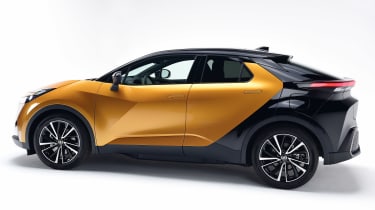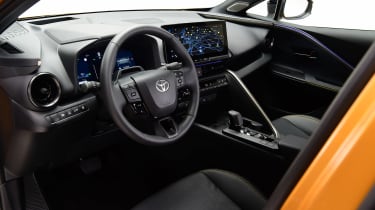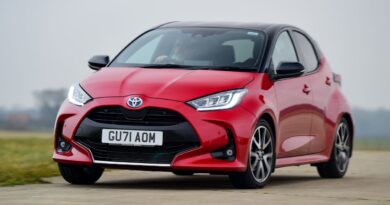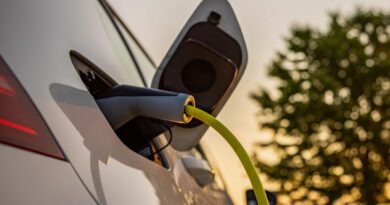New Toyota C-HR: pricing revealed for second instalment of funky hybrid crossover
The C-HR looks to conquer the tough small SUV segment with eye-catching looks and new technology
The new C-HR has arrived and Toyota’s popular little SUV looks even more wild than before. Pricing for the second-generation C-HR has now been announced with orders open now for the hybrid version.
Toyota has big expectations for the new C-HR because both it and the Corolla will essentially cover the hole left by the striking fourth-generation Prius not coming to the UK. The Japanese manufacturer decided that its second-generation C-HR family SUV covers the bases that UK buyers are looking for, so there's no need for the Prius here.
The new 'Coupe High-Rider' makes a convincing case for itself, too, with full hybrid and plug-in hybrid powertrains on offer, plus Toyota's latest infotainment tech and more space and practicality than the car it replaces. Not to mention a sharper, more striking look.
-
All-new Toyota Prius unveiled for 2023 with sleek design
In terms of pricing, the C-HR is available to order now in hybrid guise, with the plug-in hybrid coming later this year. ‘Icon’ kicks things off from £31,290 comes with 17-inch alloy wheels, a seven-inch driver’s screen, an eight-inch central touchscreen, wireless Apple CarPlay and Android Auto connectivity, a powered bootlid and adaptive cruise control. Icon and the range-topping Premiere Edition are also the only trim levels that don't come with the option of the plug-in hybrid powertrain.
Step up to the Design from £34,685 and you’ll find 18-inch alloy wheels, heated front seats, tinted windows and dual-zone climate control. The interior technology is improved with a larger 12.3-inch infotainment system combined with another 12.3-inch driver’s display. A wireless smartphone charger, front and rear USB-C ports are also standard on the Design.
The Excel comes in at £38,150 and features 19-inch alloy wheels, bi-tone exterior paint, front sport seats in suede with a memory function for the driver’s seat, interior ambient lighting and a panoramic roof. A head-up display is also an option on the Excel.
GR Sport weighs in at £40,645 with GR badging, 20-inch wheels and a revised front bumper. A head-up display is also standard on the GR Sport as is an uprated sound system.
The Premiere Edition will be available from launch and costs from £42,720. Only offered in ‘bi-tone Sulfur’ paint, it adds leather seats and a host of extra safety features.
This second-generation C-HR takes styling inspiration from the latest Prius and features C-shaped LED running lights and a two-tone front bumper insert lower down. This contrasting black body colour is continued down the car's flanks, kicking up behind the rear doors to reinterpret the C-HR's trademark C-pillar kinks. There's a neat dual-element rear spoiler at the top of the heavily raked tailgate, with a full-width LED light bar spanning the boot lid. When illuminated, this shows the 'C-HR' moniker.
The production-ready C-HR's styling remains faithful to the design of the C-HR Prologue concept, with the smoother, more curvaceous curves of Toyota's original, almost coupe-like compact SUV (which made its debut in 2016) replaced by sharp lines and solid surfacing. There's also a family resemblance to Toyota's smaller crossover for the city, the Aygo X, with both cars featuring a two-tone body and C-pillar treatment.
Another key piece of connectivity is Toyota's digital key system, expected in 2024, which will allow owners to unlock and start their car using their mobile phone. There will also be a new remote parking app, with users able to manoeuvre the vehicle from outside the car.
Toyota says that it has also boosted practicality, with feeling of space inside improved over the previous-generation car, which was known to be tight in the rear. We sat in a car at the launch and can confirm this is true, with fair legroom but still slightly limited access to the rear seats. The brand has not yet outlined boot capacities, but we're told to expect an improvement over the outgoing car’s. Toyota sources say the compromise on luggage space in the PHEV is marginal, due to the location of the battery, beneath the C-HR's floor in the centre of the car.
Many of the interior materials are made from recycled plastics, including new seat fabrics made entirely of used PET bottles. Other materials and features in the C-HR's construction – such as the new fixed panoramic-roof design, which doesn't need a sun shade, saving 5kg – help to save weight and boost efficiency, according to the brand. This has helped boost the car's ride and handling, according to Toyota; the new C-HR has been engineered for Europe, in Europe, with tweaks to the TNGA platform's suspension, brakes and steering to deliver a “fun-to-drive factor” and a balance with ride comfort.
There's a haul of safety tech on offer too, with Toyota fitting a new Acceleration Suppression system that will avoid heavy throttle inputs when an object is detected ahead, plus Proactive Driving Assist tech that works at low speed when coming off the throttle, delivering progressive deceleration when cars are detected ahead of the vehicle. Depending on trim level, the usual Toyota Safety Sense suite of systems will be available, including lane assist, autonomous emergency braking, cross-traffic alert, a driver monitor and automatic high beam, among other features.
This package will be available on the C-HR Premier Edition, a special launch model that will “showcase the highest levels of equipment and styling”. It'll be the only grade initially available when the car goes on sale later this year.
The regular trim range and pricing have yet to be confirmed, but given the increase in tech and space, expect the entry-level 1.8 Hybrid's price to rise by a reasonable amount over the outgoing car, which starts from just under £30,000. Deliveries will begin in late 2023.
Check out our list of the best hybrid SUVs on sale right now…
Source: Read Full Article


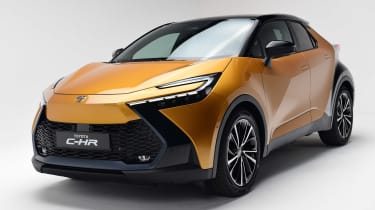
 All-new Toyota Prius unveiled for 2023 with sleek design
All-new Toyota Prius unveiled for 2023 with sleek design